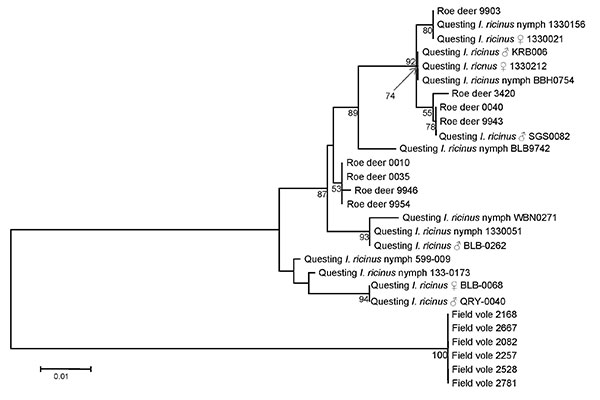Volume 15, Number 12—December 2009
Research
Delineating Anaplasma phagocytophilum Ecotypes in Coexisting, Discrete Enzootic Cycles
Figure 4

Figure 4. Phylogenetic tree inferred from alignment of Anaplasma phagocytophilum DOV1 sequence types obtained in this study. Inference was made by using the neighbor-joining algorithm. The stability of proposed branching order was assessed by bootstrapping (1,000 replicates). At nodes present in >50% of replicates, the percentage of replicates possessing the node is indicated. The DOV1 sequences obtained in this study have been deposited in GenBank under the accession nos. FJ469653–FJ469666. Scale bar indicates nucleotide substitutions per site.
Page created: December 09, 2010
Page updated: December 09, 2010
Page reviewed: December 09, 2010
The conclusions, findings, and opinions expressed by authors contributing to this journal do not necessarily reflect the official position of the U.S. Department of Health and Human Services, the Public Health Service, the Centers for Disease Control and Prevention, or the authors' affiliated institutions. Use of trade names is for identification only and does not imply endorsement by any of the groups named above.